Best Group By Function Guides to Buy in December 2025
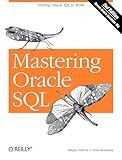
Mastering Oracle SQL, 2nd Edition
- AFFORDABLE PRICES ON QUALITY USED BOOKS-GREAT FOR BUDGET SHOPPERS!
- SUSTAINABLE CHOICE: ENJOY READING WHILE REDUCING WASTE!
- UNIQUE FINDS: DISCOVER RARE TITLES NOT AVAILABLE IN STORES!


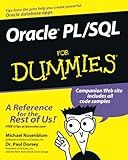
Oracle PL / SQL For Dummies
- AFFORDABLE PRICES: QUALITY BOOKS AT BUDGET-FRIENDLY RATES!
- ECO-FRIENDLY CHOICE: GO GREEN BY PURCHASING USED BOOKS!
- THOROUGHLY INSPECTED: QUALITY GUARANTEE FOR YOUR READING PLEASURE!



Oracle 12c: SQL


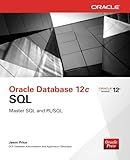
Oracle Database 12c SQL
- QUALITY ASSURANCE: CAREFULLY INSPECTED FOR GOOD CONDITION.
- COST-EFFECTIVE: SAVE MONEY WHILE ENJOYING GREAT READS!
- ECO-FRIENDLY CHOICE: HELP REDUCE WASTE WITH USED BOOKS.



Oracle PL/SQL Language Pocket Reference: A Guide to Oracle's PL/SQL Language Fundamentals


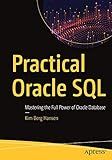
Practical Oracle SQL: Mastering the Full Power of Oracle Database


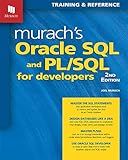
Murach's Oracle SQL and PL/SQL for Developers


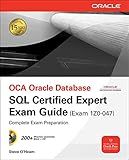
OCE Oracle Database SQL Certified Expert Exam Guide (Exam 1Z0-047) (Oracle Press)
- SAME-DAY DISPATCH FOR ORDERS BEFORE NOON-FAST DELIVERY!
- MINT CONDITION PRODUCTS WITH GUARANTEED PACKAGING FOR SAFETY.
- HASSLE-FREE RETURNS-SATISFACTION GUARANTEED!


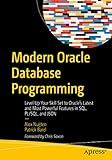
Modern Oracle Database Programming: Level Up Your Skill Set to Oracle's Latest and Most Powerful Features in SQL, PL/SQL, and JSON


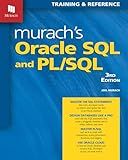
Murach's Oracle SQL and PL/SQL Professional Data Analytics Guide for Database Development & Cloud Hosting - Learn Efficient Statements, Stored Procedures & Database Design (3rd Edition)


The GROUP BY function in Oracle is used to group rows that have the same values into summary rows. This can be helpful when performing calculations on groups of data, such as finding the total sales for each product category.
To use the GROUP BY function in Oracle, you need to specify which columns you want to group by in your SELECT statement. For example, if you want to find the total sales for each product category, you would write a query like this:
SELECT category, SUM(sales) FROM sales_table GROUP BY category;
In this query, the GROUP BY clause groups the rows in the sales_table by the category column. The SUM() function is then used to calculate the total sales for each category. The result of the query will be a summary row for each unique category with the total sales for that category.
It's important to note that when using the GROUP BY function, you can only select columns that are either listed in the GROUP BY clause or have an aggregate function applied to them. This is because the GROUP BY function groups rows based on the specified columns, so any other columns selected in the query must be aggregated in some way.
What is the default order of group by function in oracle?
The default order of the GROUP BY function in Oracle is ascending order. This means that the results will be grouped and displayed in alphabetical or numeric order, depending on the specific data being grouped. However, it is important to note that the GROUP BY function itself does not explicitly control the order of the results. To achieve a specific order, you would need to use the ORDER BY clause in conjunction with the GROUP BY function.
What is the behavior of group by in presence of null values in oracle?
When using the GROUP BY clause in Oracle in the presence of null values, the null values are treated as a single group. This means that all rows with null values in the column being grouped by will be grouped together.
For example, if you have a table with a column named "category" and some rows have null values in the category column, the GROUP BY clause will group all the rows with null values in the category column together.
It is important to note that when using the GROUP BY clause in Oracle, null values are considered equal and are grouped together. If you need to treat null values differently, you can use the NVL function to replace null values with another value before using the GROUP BY clause.
What is the performance impact of using group by in oracle?
Using GROUP BY in Oracle can have a significant impact on performance, particularly when working with large datasets. The GROUP BY clause is used to group rows that have the same values into summary rows, which requires additional processing and can slow down queries.
When using GROUP BY, Oracle must first sort the data and then perform the grouping operation. This sorting and grouping can be resource-intensive and can lead to increased CPU and memory usage. Additionally, if the query is not properly optimized or if indexes are not utilized efficiently, the performance impact can be even greater.
To mitigate the performance impact of using GROUP BY in Oracle, it is important to carefully design and optimize queries, ensure that appropriate indexes are in place, and consider using alternative techniques such as analytic functions or materialized views when possible.
What is the rule for using group by with order by in oracle?
The rule for using GROUP BY with ORDER BY in Oracle is that when using both clauses in a SQL query, the ORDER BY clause should come after the GROUP BY clause. This means that the data will first be grouped according to the specified columns in the GROUP BY clause, and then the results will be sorted in the order specified by the ORDER BY clause.
Here is the basic syntax for using GROUP BY with ORDER BY in Oracle:
SELECT column1, column2, ..., aggregate_function(column) FROM table_name GROUP BY column1, column2, ... ORDER BY column1, column2, ...;
What is the impact of using group by on query performance in oracle?
Using GROUP BY in a query can have both positive and negative impacts on performance in Oracle:
Positive impact:
- Grouping data using GROUP BY can help streamline the results, making it easier to analyze and work with summarized data.
- GROUP BY can optimize the query execution plan by allowing the database engine to use specific execution strategies such as hash aggregate or merge joins.
Negative impact:
- Using GROUP BY can increase the amount of processing and resources needed to execute the query, especially if the grouping is done on a large dataset.
- Grouping large amounts of data may require additional disk I/O and memory, potentially slowing down the query performance.
- When using GROUP BY, the database may need to create temporary tables or indexes to perform the grouping, adding to the overall processing time.
Overall, the impact of using GROUP BY on query performance in Oracle depends on various factors such as the complexity of the query, the size of the dataset, the available system resources, and the underlying database indexes and statistics. It is important to carefully consider the trade-offs and optimize the query to ensure efficient performance.
